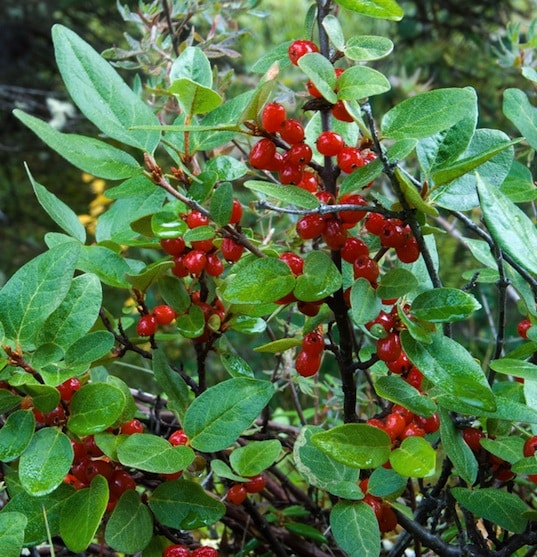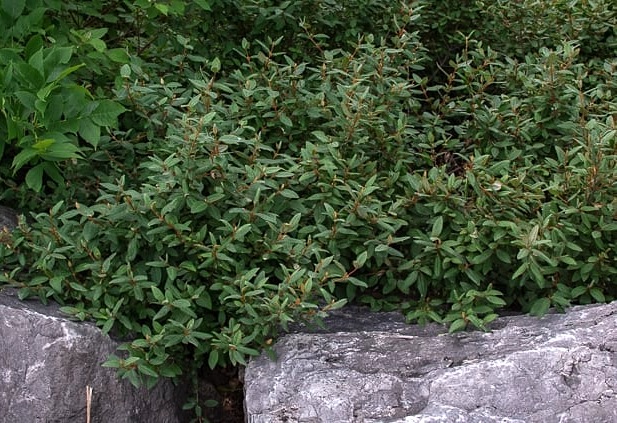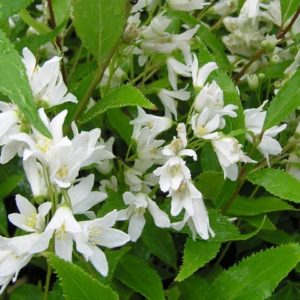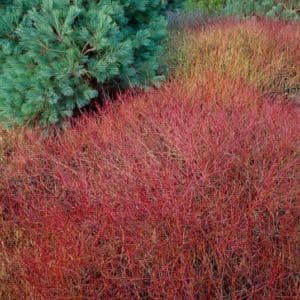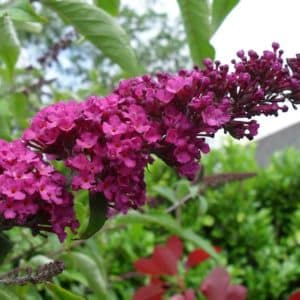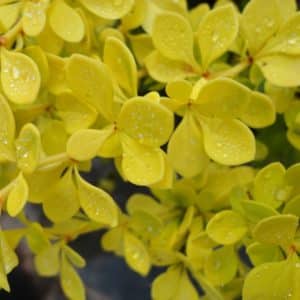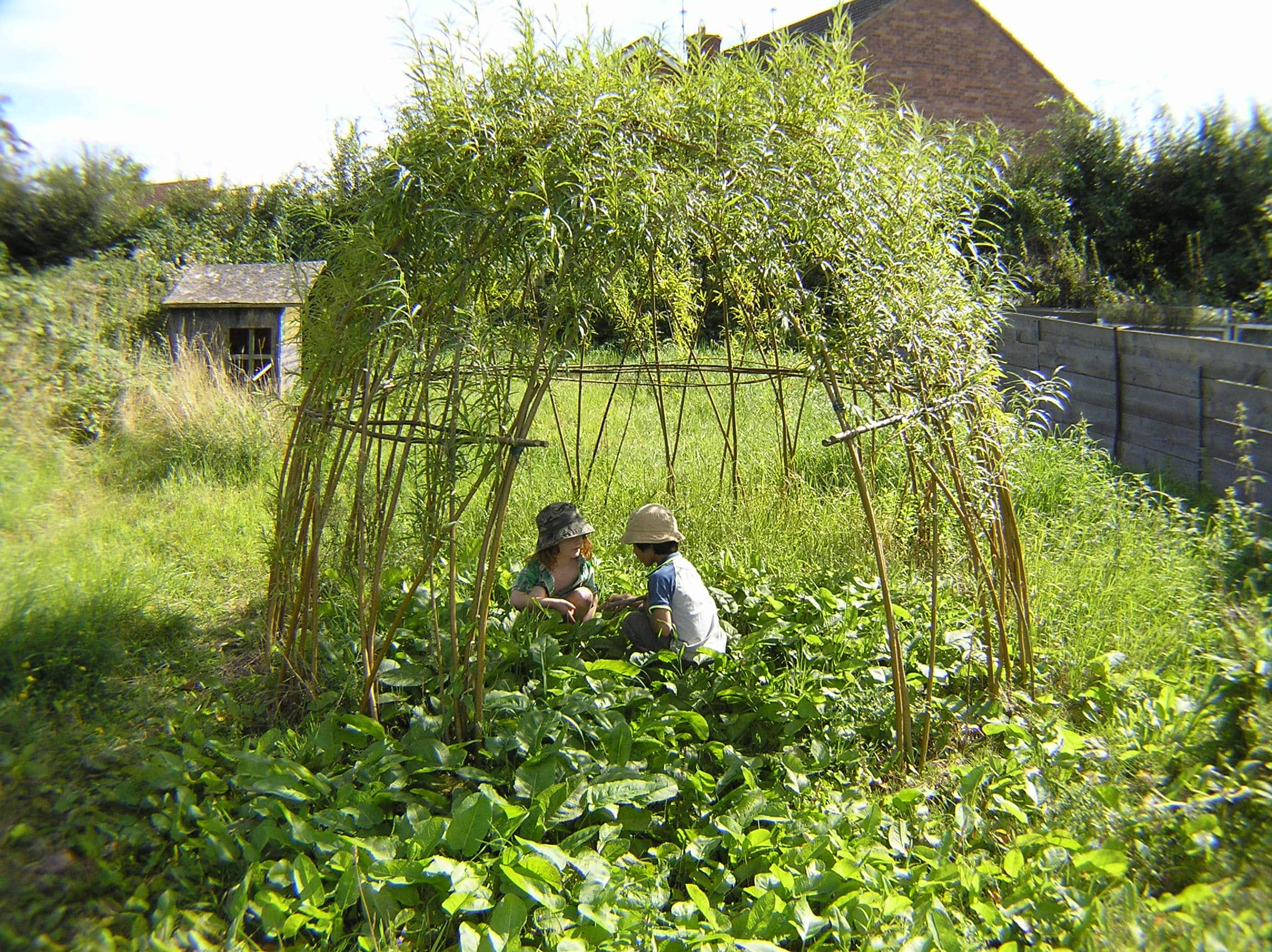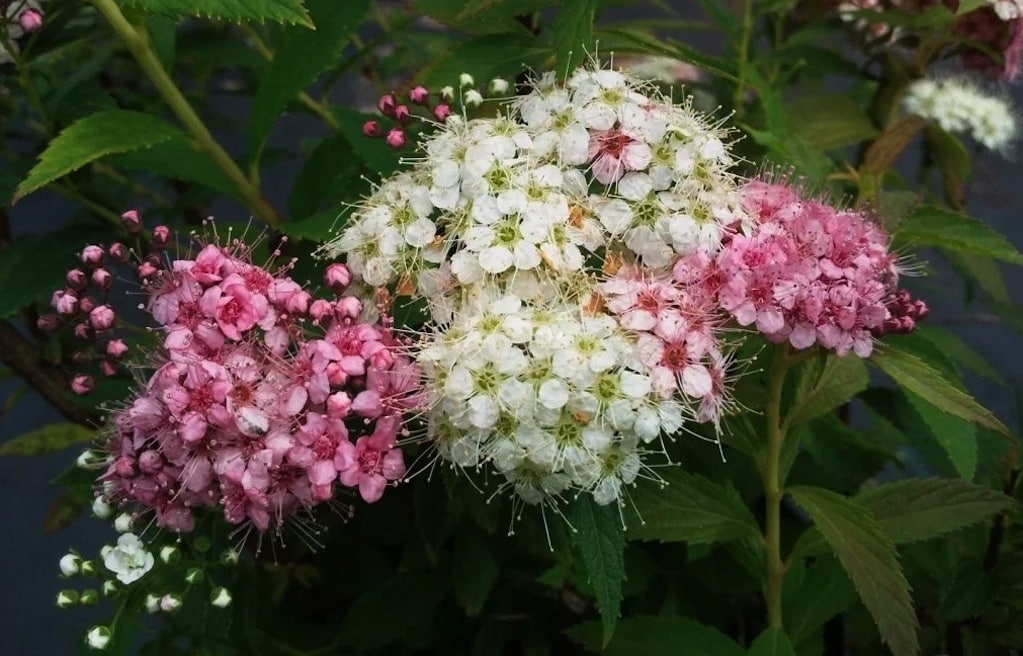Shepherdia canadensis
Canadian Buffaloberry, Soapberry, Russet Buffaloberry, Soopolallie, Foamberry, Canada Buffalo berry
- Main interest:
- drought and salt tolerant, red edible fruit, very hardy
- Exposure:
- full sun to full shade
- Soil humidity:
- dry to moist soil
- Flower colour:
- yellow
- Fragrance:
- Non-fragrant
- Flowering period:
- April to May
- Foliage:
- silver to russet green
- USDA Hardiness:
- zone 2a: -45.5 °C (-50 °F) View Zone Map
- Mature height & width (max.):
- height: 8 ft (2.4 m) width: 8 ft (2.4 m)
- Use:
- hedge, woodland gardens, naturalizing, mass planting, fruit production
Native to Canada, Shepherdia canadensis is common in northern boreal forests and higher elevations in the west, and is found on moist slopes, wooded, rocky hillsides, and conifer openings in the wild. A loosely branched shrub of rounded outline, it grows to 6-8 ft. high, and equally as wide. It has thick, leathery, silver-green to russet-green foliage. Orange-dotted white bark gives the branches a rusty appearance. Clusters of small, trumpet-shaped yellow flowers give way to yellowish-red fruits.
The fruit has a frothy texture when macerated and whipped, hence, its common name, “Soapberry”. A tart but pleasant flavour even before a frost, it become sweeter after frosts. The fruit pairs beautifully with blackberries for compotes and jams. Whip it with maple syrup to make a wonderful coulis. It can also be dried and used like currants.
- Main interest:
- drought and salt tolerant, red edible fruit, very hardy
- Exposure:
- full sun to full shade
- Soil humidity:
- dry to moist soil
- Flower colour:
- yellow
- Fragrance:
- Non-fragrant
- Flowering period:
- April to May
- Foliage:
- silver to russet green
- USDA Hardiness:
- zone 2a: -45.5 °C (-50 °F) View Zone Map
- Mature height & width (max.):
- height: 8 ft (2.4 m) width: 8 ft (2.4 m)
- Use:
- hedge, woodland gardens, naturalizing, mass planting, fruit production
Synonym(s): Lepargyrea canadensis, Hippophae canadensis









